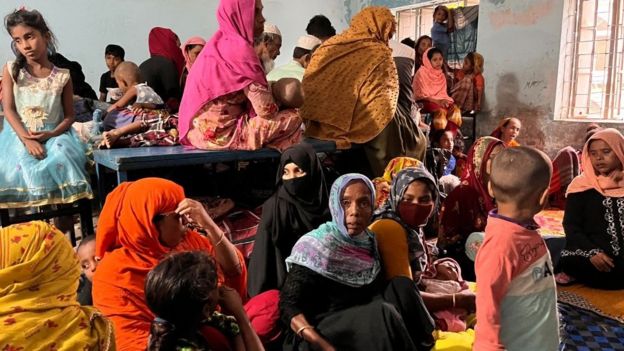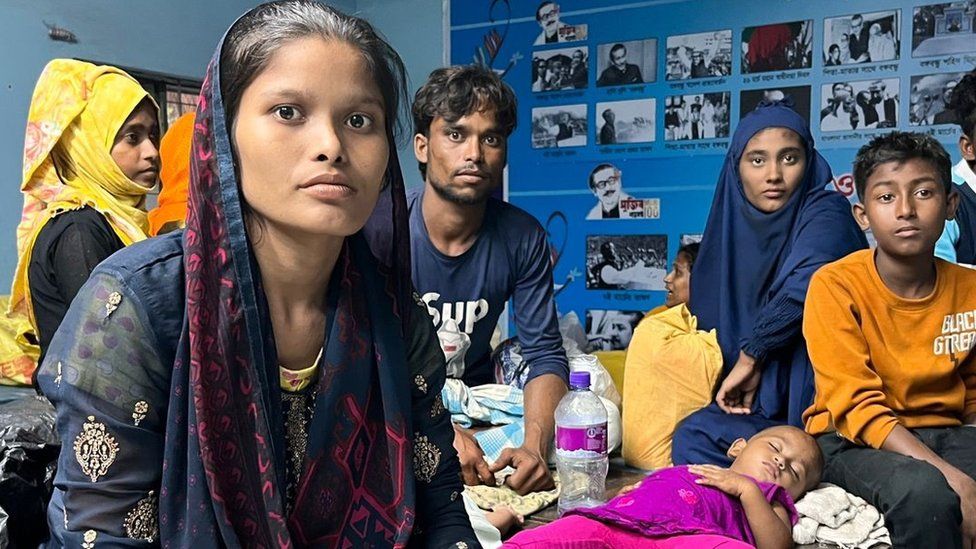This video can not be played
To play this video you need to enable JavaScript in your browser.
Myanmar’s military leaders have declared Rakhine state a national disaster area after Cyclone Mocha hit on Sunday, killing at least six people.
The cyclone was one of the strongest this century to hit the Bay of Bengal, lashing Myanmar and Bangladesh.
It did not make landfall at the world’s largest refugee camp at Cox’s Bazar in Bangladesh, despite earlier fears.
However the category five storm pummelled Myanmar’s coast, destroying hundreds of homes and shelters.
Heavy rains, strong winds and a storm urge were recorded across the low-lying Rakhine area, particularly in around the state capital Sittwe.
Locals told the BBC there was destruction across 90% of the city. Communication lines are also down after winds of up to 209kmh (130mph) knocked down poles and trees.
The storm has also destroyed camps for displaced Rohingya people. Rakhine, in Myanmar’s west, has been the scene of sustained ethnic conflict for years.
Cyclone Mocha crossed the coast between Kyaukpyu township in Myanmar and Cox’s Bazar around midday on Sunday local time.
The UN’s humanitarian assistance office said the “ongoing wild weather” and telecommunications interruptions meant it had not yet been able to assess the disaster’s full magnitude.
“But early reports suggest the damage is extensive and needs among already vulnerable communities, particularly displaced people, will be high,” the latest UN statement read.
The six deaths reported so far were from Sittwe, authorities said. Local media reported a 14-year-old boy was among the dead, killed by a fallen tree.
Pictures and videos from the area showed roofs being blown off houses, telecom towers toppled and billboards crashing off buildings.
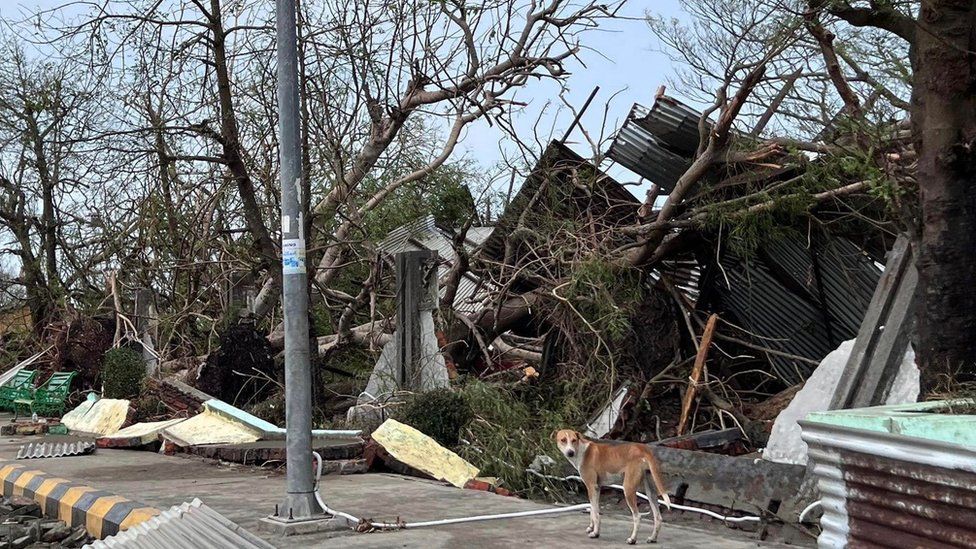
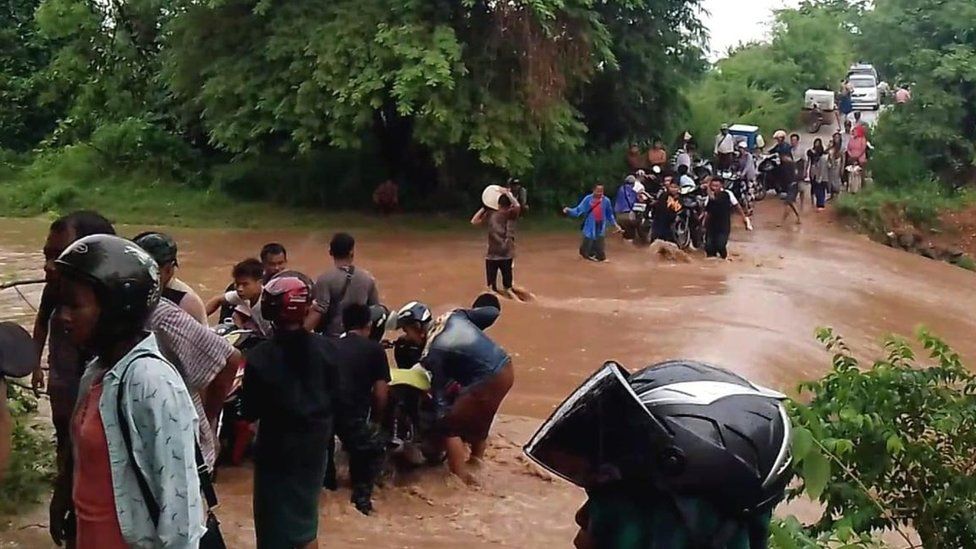
In neighbouring Bangladesh, officials said the cyclone had not caused “major damage” although it did trigger landslides and floods. No deaths have been reported from the country so far.
In the lead-up to the storm’s arrival, more than 750,000 people had evacuated villages closest to the shoreline.
Further inland, people crammed into whatever shelter they could find as the sky darkened and the rain pounded down.
Locals packed into a school which had been turned into a cyclone shelter. Mothers with their babies, young children and the elderly, sought space to rest – sleeping on desks and resting under them.
Many also arrived at shelters on rickshaws and on foot – bringing cattle, chickens and other livestock from their seaside villages two hours away.
“I didn’t want to leave my house,” said Sumi Akter who lives on a riverbank.
But she told the BBC she had lived through other cyclones in recent years – and was resigned to a now familiar pattern of leaving her home to the mercy of nature.
Scientists say storms such as cyclones have become stronger and more frequent due to climate change. The UN said Cyclone Mocha was “one of the strong cyclones on record” for Myanmar.
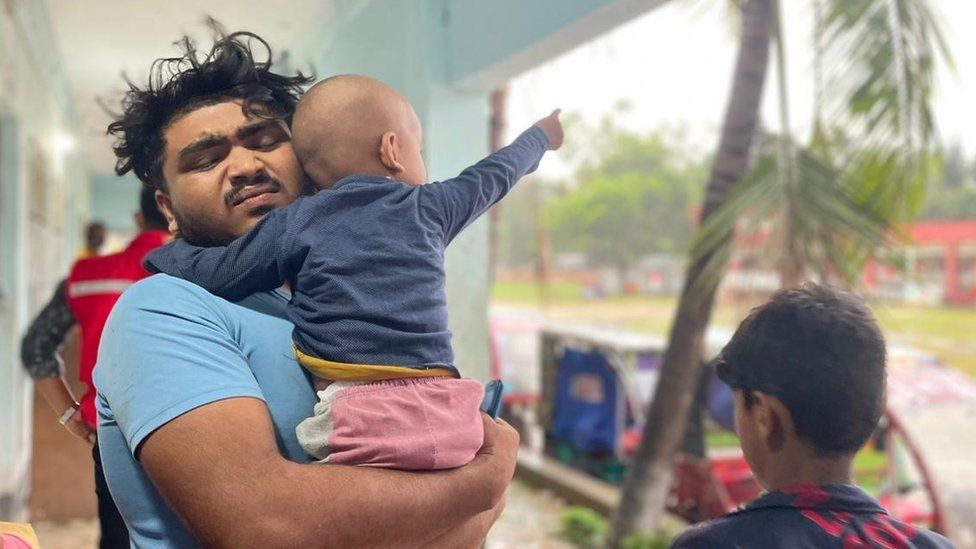
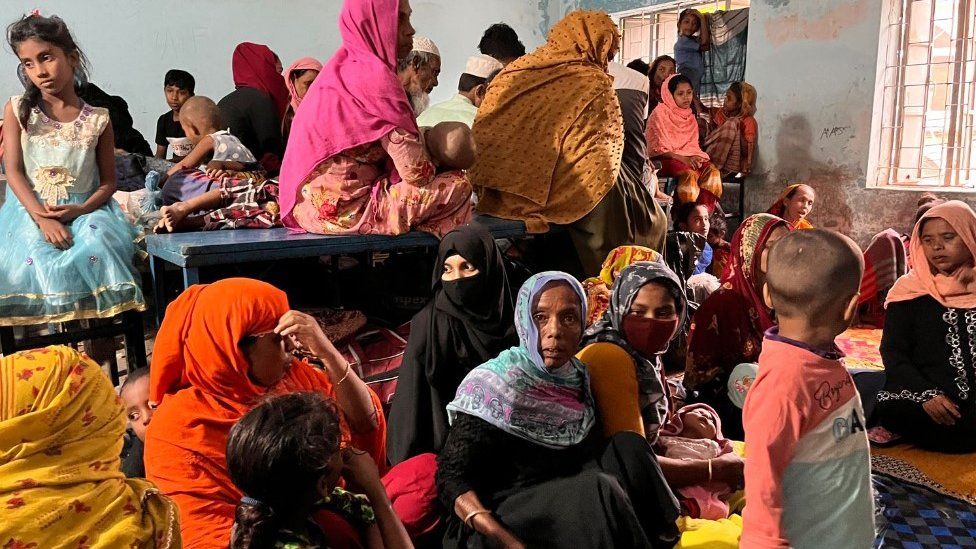
Meanwhile in the camp in Cox’s Bazar, Rohingyas who fled Myanmar in recent years hunkered down in flimsy shelters. Bangladesh’s government prevents Rohingya refugees from leaving the camps and from building more permanent structures.
Authorities told the BBC more than 1,300 shelters there had been damaged by the wind, along with16 mosques and learning centres. The storm had felled trees and caused landslides.
Mizanur Rahman, a spokesman of the Refugee Relief and Repatriation Commissioner, said so far he was not aware of any casualties in the camps.
In 2008, Cyclone Nargis tore through the southern coastal regions of Myanmar, killing almost 140,000 people and affecting communities of millions living along the Irrawaddy Delta.
Additional reporting by Kelly Ng in Singapore

